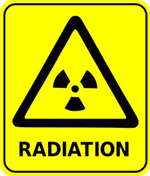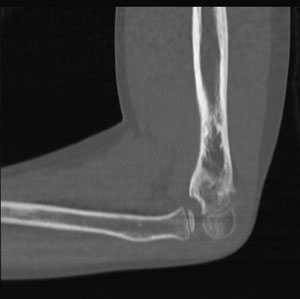What is Radiation?

Radiation is a form of energy that travels through space or matter. It's all around us, coming from both natural and man-made sources. We are all exposed to radiation every day, mainly from the sun and soil. Other sources of radiation are man-made and include consumer products as well as diagnostic imaging tests like X-rays, CT scans, and nuclear medicine studies.
X-rays are a form of “ionizing radiation” which has enough energy to penetrate the body, which enables X-rays to produce pictures or images of internal body structures. X-rays are also used to assist with interventional procedures and to target and destroy abnormal cells during radiation therapy.
Measuring Radiation Dosage

The scientific unit of measurement for radiation dose is the Gray (Gy), which is a measure of the amount of X-ray energy absorbed per unit mass. Other radiation units include rad, rem, roentgen, and Sievert.
X-ray imaging procedures normally focus on a specific body part (for example the head or chest) and expose only that region of the body to a radiation dose. Furthermore, different tissues and organs have varying sensitivity to radiation exposure, so the actual radiation risk from an X-ray procedure will vary depending on the body part imaged and the tissues exposed. The term “effective dose” is used to account for the portion of the body exposed during a procedure, the relative sensitivities of the different tissues exposed, and averages the risk of radiation over the entire body. More importantly, it allows for comparison to more familiar sources of exposure like natural background radiation. The unit of effective dose is the Sievert. X-ray procedures result in a small fraction of a Sievert, usually one one-thousandth of a Sievert, indicated by a milliSievert (mSv).
Common Sources of Radiation
We are exposed to radiation from natural sources all the time. According to recent estimates, the average person in the United States receives an effective dose of about 3 milliSieverts (mSv) per year from naturally occurring radioactive materials. These natural “background” doses vary throughout the country.
Altitude plays a role in the amount of cosmic radiation, so people living on the plateaus of Colorado or New Mexico receive about 1.5 mSv more per year than those living near sea level. The added dose from cosmic rays during a coast-to-coast round trip flight in a commercial airplane is about 0.03 mSv. However, the largest source of background radiation comes from radon gas in our homes (about 2 mSv per year). Like other sources of background radiation, exposure to radon varies widely from one part of the country to another. In simple terms, the radiation exposure from one chest X-ray is equivalent to the amount of radiation exposure one experiences from our natural surroundings over three days.
More information about medical radiation is available at the radiologyinfo.org website.
